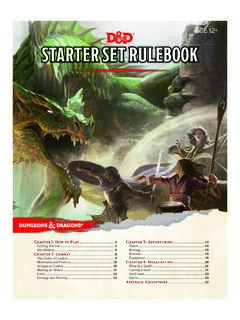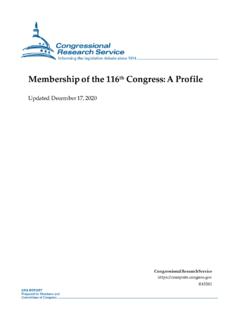Transcription of DEAR EDUCATOR s guide - Hachette Book Group
1 DEAR EDUCATOR , EDUCATOR 's guide Stamped: Racism, Antiracism, and You by Jason Reynolds and Dr. Ibram X. Kendi ex- plores the legacy of racism throughout the entire history of the United States of Amer- sessions and at home in order to keep mo- mentum and energy high. Because students will be reading about ideas, people, and events that are challenging and emotional, LittleBrownSchool | ica. Further, it spotlights the work of antira- it is also recommended that book clubs are cists and those who have resisted the racist formed so that small groups of students can ideas and policies that shape this nation. read and journey through information that they will find fascinating, frustrating, and a quick glance at textbooks used in class- frightening. Having a core Group of peers AGES 12 & UP. rooms across the country reveals the pauci- that students feel connected to can provide ty of pages devoted to teaching about the a supportive foundation for them to open origins of racism.
2 And among these pages up, take risks, and engage in conversations are obscured narratives that belie the reali- that can be transformative. This guide in- ties of racism, as recent headlines demon- cludes: strate. Stamped unveils this reality, which has often been hidden from students, by Essential Questions offered throughout deconstructing false narratives and provid- the reading for students to engage with ing a comprehensive discussion of the his- in order to spark conversations that will tory of race and racism in America. inevitably branch into multiple directions. Encourage this. Prior to engaging students in this unit, it is important that educators confront their own Reader's Notebook prompts and note- @LBSchool |. racist ideas by interrogating what they've taking strategies that help students pro- come to understand about the racial groups cess and synthesize information they're and how they've acquired this knowledge.
3 Learning, and reflection questions to make Reflecting on their own racial identities and space for students to, as Reynolds sug- ways they locate and implicate themselves gests, inhale and exhale as they read and in the work of racial justice is a vital process, discuss Stamped. Because some prompts which can help prevent educators from push students to locate and implicate causing harm when facilitating conversa- themselves in ways that may feel deeply tions about race with students. personal, students may choose not to share some of their responses. Further, sending a letter home to parents/. guardians alerting them to the kinds of con- Collaborative Club Work recommended versations that will occur throughout this to give students time twice per week to unit is helpful. Because the United States process the reading and co-construct an has not provided in-depth teaching and Antiracist Timeline.
4 Learning opportunities on race and racism in K 12 schooling, family members may Research Modules for each section of be learning alongside students and edu- the book that invite students to work as cators as they engage with this unit. Pro- a Group , with a partner in their Group , viding them with a copy of this guide can or in some cases individually to research help make discussions more fluid between and explore ideas, people, and events school and home. further. You may decide to prioritize certain modules over others depend- This guide suggests a month-long approach ing on students' grade level, time, and to reading and discussing Stamped with other factors. Grade-level recommenda- middle-school and high-school readers in tions are provided. English, English Language Arts, Social Stud- ies, History, and Humanities classrooms. A Multimodal Culminating Project recom- daily pacing recommendation is provided mendations that provide students with for reading Stamped in about three weeks.
5 Opportunities to synthesize their reflec- It suggests that students be given time to tions and research. read both in school during part of their class Continued on the next page .. Glass has been used as a powerful metaphor for read- EDUCATOR 'S guide . ing. Multicultural EDUCATOR and scholar Dr. Rudine Sims Although race has been an important factor in the way Bishop uses it to describe the important purposes that the US and all its institutions have been designed, books serve for students: as mirrors, windows, and slid- one of the biggest roadblocks to engaging in discourse ing glass doors. In his award-winning picture book Mar- about this is discomfort. Conversations about race and tin's Big Words, illustrator Bryan Collier shares that, to racism are inherently uncomfortable. And yet Stamped, him, stained-glass windows serve as a metaphor for the as well as frequent news headlines about racist inci- life and work of Dr.
6 Martin Luther King Jr. Glass, too, is dents, makes clear that we cannot allow discomfort to a symbol for this unit on Stamped. Students are invited be a deterrent to this work. Instead, with continued to peer through the looking glass to learn about the practice, guided by educators who continuously reflect history of racist ideas in America. They are challenged on and interrogate their own racial identities, these to hold up a magnifying glass to identify and examine conversations become easier. Rather than seeking to racist policies that are embedded within the fabric of create safe spaces, which has become synonymous this nation. Students are also empowered to look into with comfort, the goal should be to foster brave spac- the mirror to locate themselves in the work of stamping es for conversations about race and racism that are out racist thoughts in their lives today.
7 May this book grounded in mutual respect. Establishing community and this unit provide a window to view the path for- agreements and protocols for discussions about race is ward for leading antiracist lives. one way that educators can help students enter these brave spaces where listening to and valuing various SUPPORTING NATIONAL ELA AND perspectives and experiences is central. SOCIAL STUDIES STANDARDS. Establishing community agreements prior to read- Stamped is a powerful text selection for middle-grade ing Stamped can help support students in having a and high-school students for addressing ELA stan- more meaningful experience as they navigate this dards in reading informational texts and Social Studies comprehensive, complex text and examine the ideas standards such as, but not limited to, the Common within it as well as their own. Provide opportunities Core Standards (CCSS), and the National Curriculum to practice these agreements by facilitating conver- Standards for Social Studies.
8 educators are encour- sations that help students develop a consciousness, aged to think about this text through the lens of their or further their awareness, about race. For example, state-specific and national standards. students can reflect on the ways they've noticed that race matters in society and the ways their racial identi- ties have influenced their lives. Reflecting and sharing responses in small groups while practicing the com- munity agreements can help students become more attuned to their own racialized experiences and the racialized experiences of others. Implementing com- munity agreements in classrooms can make it possible for discussions about race and racism to be sustained across the school year, not simply across one unit or the reading of one text. ESTABLISHING COMMUNITY AGREEMENTS. A NOTE OF CAUTION. It is important to note that some of the language used in Stamped may be triggering for some students.
9 It is recommended that educators and students discuss this up front and make decisions as a community about how they will navigate this in ways that foster a learning environment that mitigates the emotional labor of students of color. For example, the N-word appears in Stamped. educators can help students understand that this word provokes intense emotions and reactions based on the truth behind its origins, its historical use toward people of color, and the legacy that remains today. A community agreement might include the provi- sion that just because students will read this word doesn't mean they have to say this word during class discussions. DAY 1. EDUCATOR 'S guide KEY CONCEPT. Understanding the legacy of racism in America is essential to building an antiracist America. On this first day of the unit you'll begin to develop a sense of community among readers as they engage with ideas and work that will be challenging and transformative.
10 Help students form book clubs that consist of four or five students. Read the Dear Reader letter by Kendi aloud to students. Use the Essential Questions to frame how they listen to and think about the letter. Students might jot down their ideas on Post-its or in their Reader's Notebooks. You might also use a document camera to share the Essential Questions and to show and mark key parts of the letter as students engage in discussion within their book clubs. Students will also read chapter 1 today and discuss the Essential Questions with their book club members. ESSENTIAL QUESTIONS (Opening Letter). So much has been hidden from us. As you listen to this letter to readers by Kendi, think about and prepare to discuss the following: What are the consequences of continued omissions about the history of racism and antiracism in the US? What are the implications for you and the kind of thinking you might undertake, discussions you might have, and actions you might take up as you read this book?






